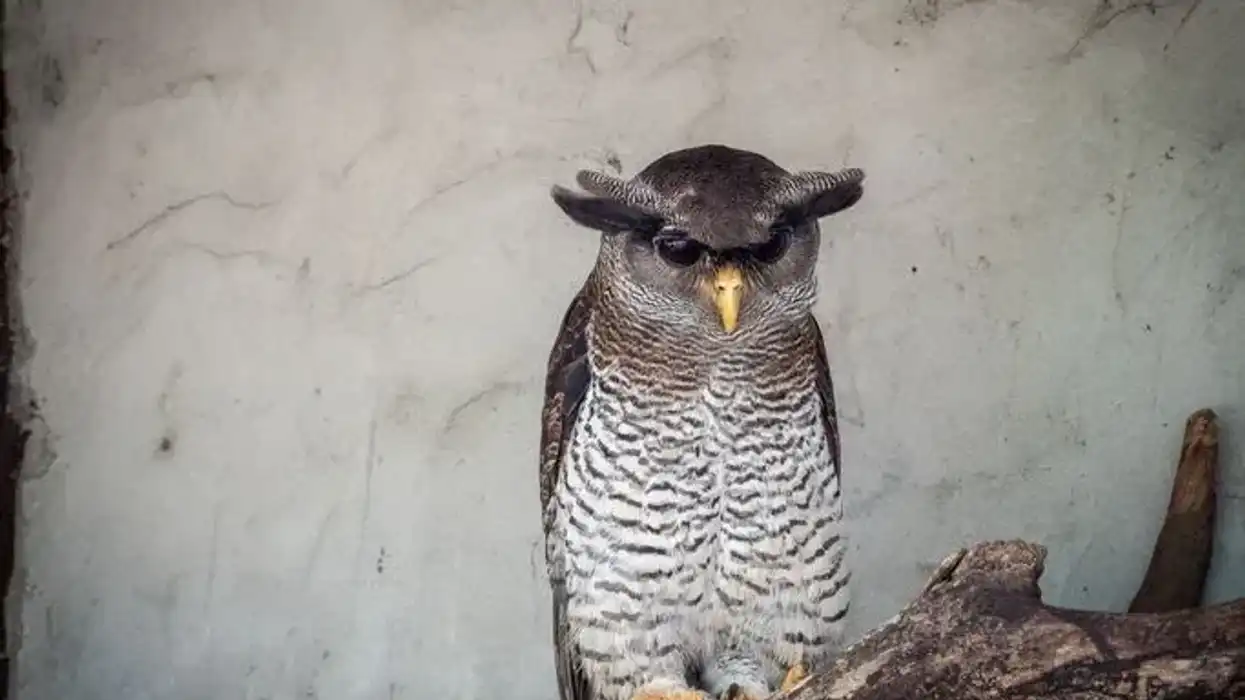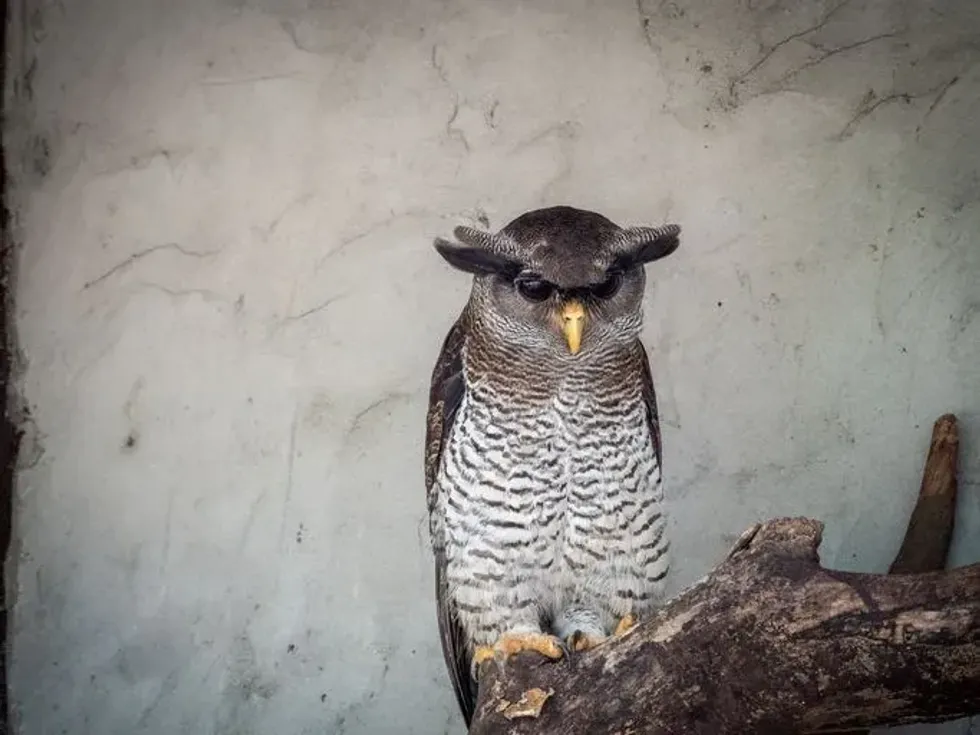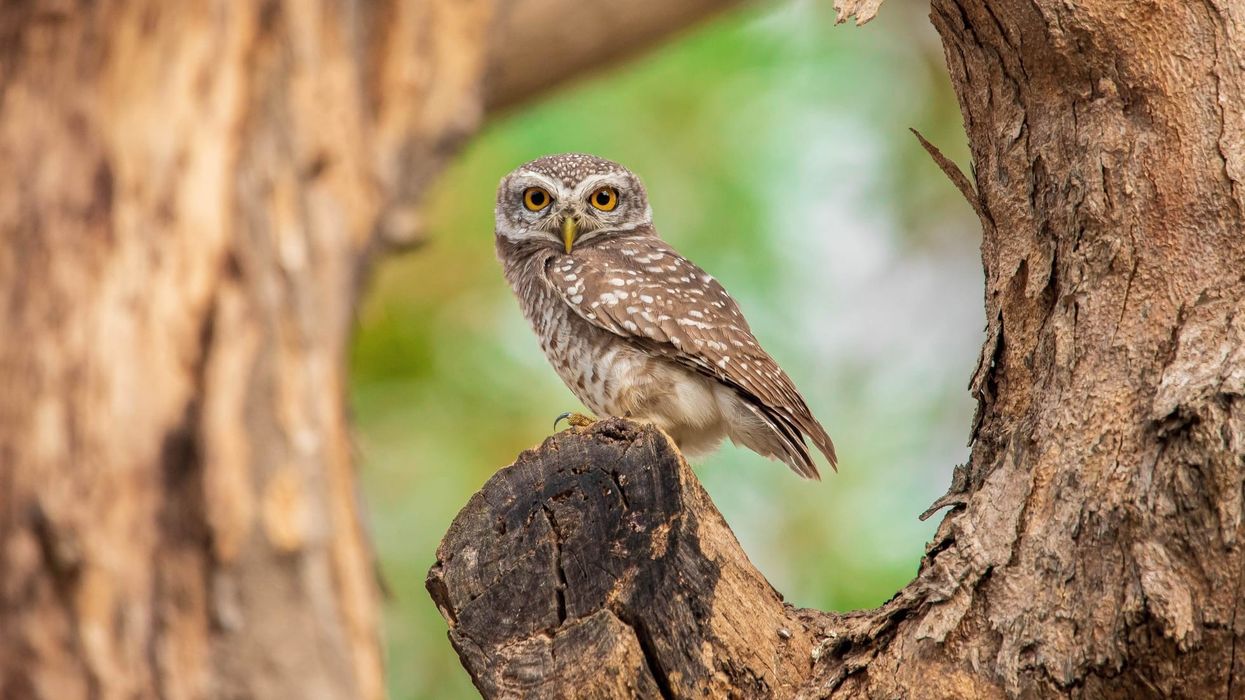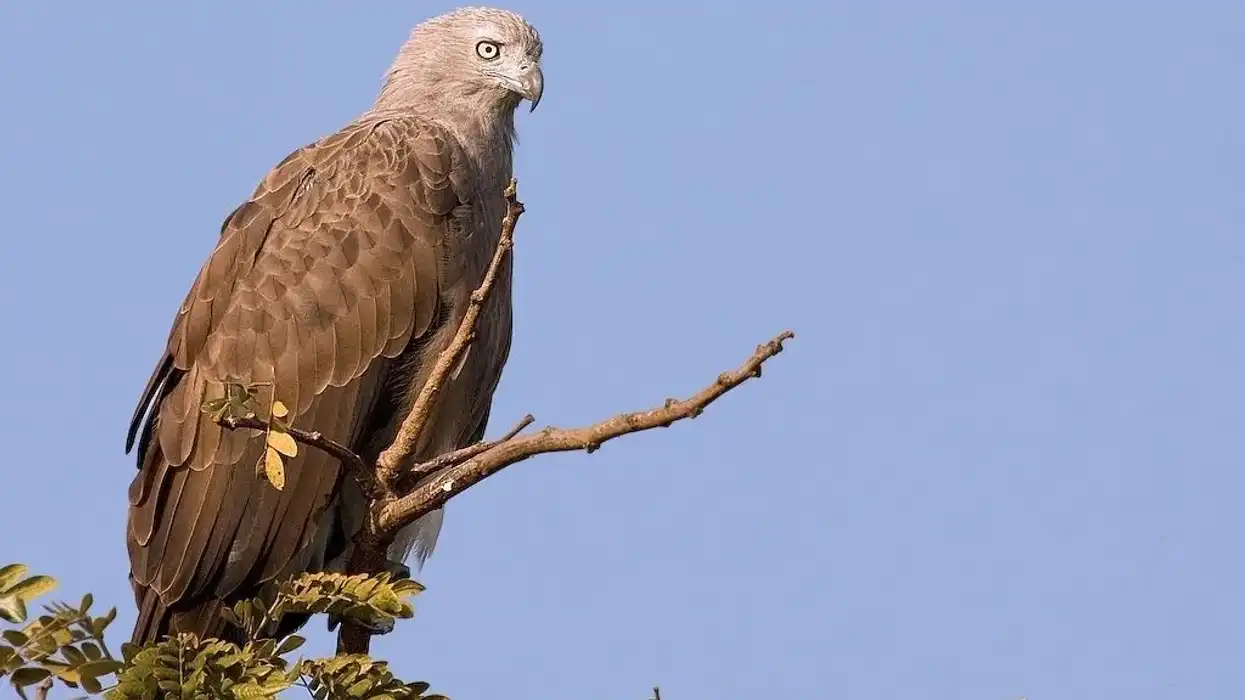The barred eagle-owl scientific name is Bubo sumatranus. The beautiful barred eagle-owl is also known as the oriental eagle owl or the Malay eagle owl. The species name sumatranus has been derived from the Latin form of Sumatra.
In Sumatra, the first barred eagle owl was known to have been located. This species has three known subspecies. The B. sumatranus tenuifasciatus is found on the island of Borneo.
The B. sumatranus strepitans is found in Java and Bali. The B. sumatranus sumatranus is found in Sumatra, Bangka and the Malay Peninsula.
The B. sumatranus sumatranus had been described by Raffles. Raffles had described the bird in 1822. The owl of this species can be seen from the sea level up to a height of 5,200 ft (1600 m).
The curious barred eagle owl is a resident species. It is not known to have long migration routes. A golden eagle, martial eagle, crowned eagle, wedge-tailed eagle, white-tailed eagle, Steller's sea, harpy, African fish, or Philippine eagle can kill an owl of this species.
Like reading about the various birds of the world? Want to know more about them? Let's move on.
If you like reading about the various birds of the world, you may also like reading about the flammulated owl and the saker falcon.
Barred Eagle-Owl Interesting Facts
What type of animal is a barred eagle-owl?
The beautiful barred eagle owl bubo is an owl that belongs to the phylum Chordata and the order Strigiformes.
What class of animal does a barred eagle-owl belong to?
The Malay eagle-owl belong to the class Aves, that is, it is a bird.
How many barred eagle-owls are there in the world?
The exact number of mature individuals of the Malay eagle-owl is not known.
Where does a barred eagle-owl live?
The barred eagle-owl range map is not too diverse. It is found in Indonesia, Myanmar, Thailand, Java, Brunei Darussalam, and Malaysia. The bird is not found in Singapore.
What is a barred eagle-owl's habitat?
The barred eagle-owl natural habitat is in tropical or subtropical areas. In these areas, it is found in moist lowland forests. The owl is also found in evergreen forests that have streams or pools of water.
The owl is found in terrestrial habitats. The barred eagle-owl may also be found in artificial habitats like gardens. This creature is also seen in secondary growth and plantations.
Who do barred eagle-owls live with?
In the breeding season, the barred eagle-owl is seen in pairs. It can roost by itself as well.
How long does a barred eagle-owl live?
The exact information is not available for the barred eagle-owl.
How do they reproduce?
The reproductive period varies according to the region. In the peninsular parts of Malaysia, the young are found in the months of January, late in February, and in April to June. In Sumatra, the young ones are found from March to May.
In Thailand, the young ones are heard from June to October. The nest is built in the cavity of a large tree. In Java, the young ones are seen in May and June.
In Java and Sumatra, the nest is kept on bird's nest fern (Asplenium nidus). The female usually lays one egg. The egg is white in color and oval in shape.
The incubation period is not known. Most probably these owls mate for life. Also, they are very loyal to their nesting sites and return to breed in them year after year.
What is their conservation status?
The International Union for Conservation of Nature (IUCN) has granted a status of Least Concern to the dark barred eagle owl.
Barred Eagle-Owl Fun Facts
What do barred eagle-owls look like?
The barred eagle-owl of this genus is a large owl. However, it is not so large as a Bengal eagle owl. The bird has dark brown eyes. Sometimes, the species has been observed to have yellow eyes.
The feet and the bill are yellow in color. The underparts are whitish with tinges of deep grey. It is observed that the upperparts of the owl are dark. The upperparts have zigzag bars.
Sexual dimorphism is minimal in this species. Females are slightly larger than males. The subspecies found in adjacent islands also vary in size. It is a feature unheard of in the eagle-owls. The breast of the bird is more marked than the belly.
The species has prominent ear tufts. The ear tufts are large. However, they slant sideways. The young barred eagle owl is mostly white in color.
 *We've been unable to source an image of a barred eagle-owl and have used an image of a Eurasian eagle-owl instead. If you are able to provide us with a royalty-free image of a barred eagle-owl, we would be happy to credit you. Please contact us at hello@kidadl.com.
*We've been unable to source an image of a barred eagle-owl and have used an image of a Eurasian eagle-owl instead. If you are able to provide us with a royalty-free image of a barred eagle-owl, we would be happy to credit you. Please contact us at hello@kidadl.com.
How cute are they?
The adult bird and the juvenile bird with their soft feathers and whitish bodies covered in dark bars are very cute.
How do they communicate?
The barred eagle owl call is a 'hoo'. It is low in pitch. The call mainly comprises a deep hoot - a hoo or a hoo-hoo. It drops a bit in pitch towards the end. Double hoots have an interval of two seconds in between. A 'cackling' of various shrieks, syllables, and strangulated noises is also produced.
How big is a barred eagle-owl?
The barred eagle owl is 16-19 in (40-48 cm) in length. The Eurasian eagle-owl size vs barred owl size is interesting. The Eurasian eagle-owl or the Bubo bubo 30 in (75 cm) is bigger than the barred eagle owl.
How fast can a barred eagle-owl fly?
The exact information is not available for the barred eagle owl of the family Strigidae. However, the Eurasian eagle-owl can reach speeds up to 31 mph (49.8 kph).
How much does a barred eagle-owl weigh?
The barred eagle-owl weighs about 21.8 oz (620 g). They weigh almost half of an Indian eagle owl.
What are the male and female names of the species?
In Spanish, a male is termed a buho while a female is called a lechuza.
What would you call a baby barred eagle-owl?
A baby barred-eagle owl is called a juvenile, a nestling, or a fledgling. A baby barred-eagle owl is also called an owlet.
What do they eat?
The barred eagle-owl is carnivorous in nature. Insects, small mammals, rodents, snakes, and frogs fall prey to this bird.
Are they dangerous?
If an owl feels threatened, it can get aggressive and attack humans. It may do so in order to protect its nest. It can scratch human beings with its sharp talons.
Would they make a good pet?
Owls in general do not make good pets. This is because they have specific nutritional requirements. They are birds of prey and cannot be fed fruits, seeds, or vegetables.
Did you know...
The Barred eagle-owl is a nocturnal species. The eagle-owls are the largest species of owls in the world. These owls can build their nests around human habitations. Also, they can tolerate disturbances in their habitats.
The barred eagle-owl occurs in at least one protected area.
Conservation sites have been identified over the entire range for these grey pairs of avians. These have been subjected to international management and trade controls.
The bird has not been subjected to ex-situ conservation. It has not been introduced benignly or successfully reintroduced. There is no action recovery plan or systematic monitoring scheme in place.
Why are barred eagle-owls endangered?
The barred eagle owl is classified as Least Concern by IUCN. It does not have an endangered status.
According to the International Union for Conservation of Nature (IUCN), the barred eagle owl population is stable. However, recent data shows that the barred eagle-owl has lost more than a quarter of its tropical or subtropical habitat. It should be considered to be Near Threatened globally.
Why are they called barred eagle-owls?
The black-barred eagle owl of the family Strigidae is named after its physical features. The back of the bird is dark in color and is finely barred with bars that are reddish-brown in color. The belly is greyish-white in color. The bird has barred underparts.
Here at Kidadl, we have carefully created lots of interesting family-friendly animal facts for everyone to discover! For more relatable content, check out these burrowing owl facts and Rufous owl facts for kids.
You can even occupy yourself at home by coloring in one of our free printable owl coloring pages.




 *We've been unable to source an image of a barred eagle-owl and have used an image of a Eurasian eagle-owl instead. If you are able to provide us with a royalty-free image of a barred eagle-owl, we would be happy to credit you. Please contact us at hello@kidadl.com.
*We've been unable to source an image of a barred eagle-owl and have used an image of a Eurasian eagle-owl instead. If you are able to provide us with a royalty-free image of a barred eagle-owl, we would be happy to credit you. Please contact us at hello@kidadl.com.



